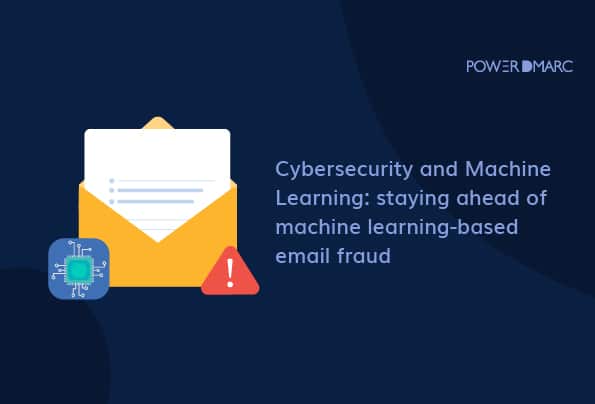Cybersecurity is a constantly evolving field, and the latest technology is constantly being incorporated into the fight to keep your data safe. Machine learning has been used to protect against email fraud for years, but it’s gotten better at it in recent times.
What is machine learning?
Machine learning is a type of artificial intelligence that allows computers to learn from examples and make predictions based on those examples. In the context of email fraud, this means that attackers can program their bots to analyze email signatures, subject lines, and other features of common messages so that when they receive an email from a real user, they’ll know how to respond in ways that will seem familiar and legitimate.
For example: If someone sends an email with the subject line “check your balance,” then the bot might respond by saying something like “I’m glad you’re checking your balance.” This makes the scam seem more legitimate because it seems like it came from someone who actually works at the bank or other financial institution being targeted by the attack. Security and verification are needed in everything, therefore juno film analysis essay will be needed by anyone who wants to have a well-written work.
The best way to stay ahead of machine learning-based email fraud is by staying on top of emerging trends in cyber security.
What is machine learning-based email fraud?
Machine learning-based email fraud is a type of email scam that uses machine learning algorithms to create convincing emails that mimic legitimate emails. These algorithms analyze large amounts of data to learn the writing style, tone, and language used in legitimate emails. They then use this knowledge to generate convincing emails that are difficult to distinguish from legitimate emails.
The goal of machine learning-based email fraud is to trick recipients into revealing sensitive information such as passwords, bank account numbers, or other personal information. These emails can be used to launch targeted attacks against individuals or organizations or to gain access to sensitive data or systems.
Staying ahead of machine learning-based email fraud
Staying ahead of machine learning-based email fraud requires a multi-layered approach that combines machine learning algorithms with human expertise and user education. Here are some steps that can help:
1. Use advanced email security solutions
One of the most effective ways to stay ahead of machine learning-based email fraud is to use advanced email security solutions. These solutions use machine learning algorithms to analyze email data and detect anomalies that may indicate fraudulent activity. They can also use behavioral analysis to identify unusual patterns of activity that may indicate a phishing attack.
Email security is a tough nut to crack.
There are all sorts of ways that malicious actors can get your email address and use it to send out spam, phishing emails, or even malware. These threats are made even more dangerous when you consider the fact that many people will open these emails without even thinking about them.
- But luckily, there are some great solutions for email security out there. One of them is SPF (Sender Policy Framework). It’s a way for senders to prevent their emails from being sent by unauthorized sources—like spammers and phishers—and it can help keep your inbox safe from hackers.
- Another solution is DKIM (Domain-based Message Authentication, Reporting & Conformance), which verifies that an email has not been changed in transit between servers. This helps prevent spoofing and man-in-the-middle attacks on your email accounts.
- And finally, DMARC (Domain-based Message Authentication Reporting & Conformance), allows you to set up policies for how your emails are delivered through mail providers like Gmail or Yahoo! Mail.
-
Train employees on how to recognize and respond to phishing attacks
User education is a critical component of any cybersecurity strategy. It is essential to train employees on how to recognize and respond to phishing attacks. This includes teaching them how to identify suspicious emails, how to avoid clicking on links or downloading attachments from unknown sources, and how to report suspicious activity to the IT department.
2. Implement multi-factor authentication
Multi-factor authentication is an effective way to protect against machine learning-based email fraud. This security measure requires users to provide multiple forms of authentication before accessing sensitive data or systems. This can include a password, a security token, or biometric identification such as a fingerprint or facial recognition.
3. Monitor for unusual activity
It is important to monitor for unusual activity on your network or systems. This includes monitoring email traffic, system logs, and user activity. This can help identify suspicious behavior that may indicate a phishing attack or other cybersecurity threat.
4. Stay up to date with the latest cybersecurity trends
Staying up to date with the latest cybersecurity trends is essential for staying ahead of machine learning-based email fraud. This includes attending conferences, reading industry publications, and keeping up with the latest threat intelligence reports.
Conclusion
Machine learning-based email fraud is a growing threat to organizations and individuals. Cybercriminals are using machine learning algorithms to create convincing emails that are difficult to distinguish from legitimate emails. Staying ahead of this threat requires a multi-layered approach that combines machine learning algorithms with human expertise and user education.
By implementing advanced email security solutions, training employees on how to recognize and respond to phishing attacks, implementing multi-factor authentication, monitoring for unusual activity, and staying up to date with the latest cybersecurity trends, organizations can stay ahead of machine learning-based email fraud and other cybersecurity threats.
